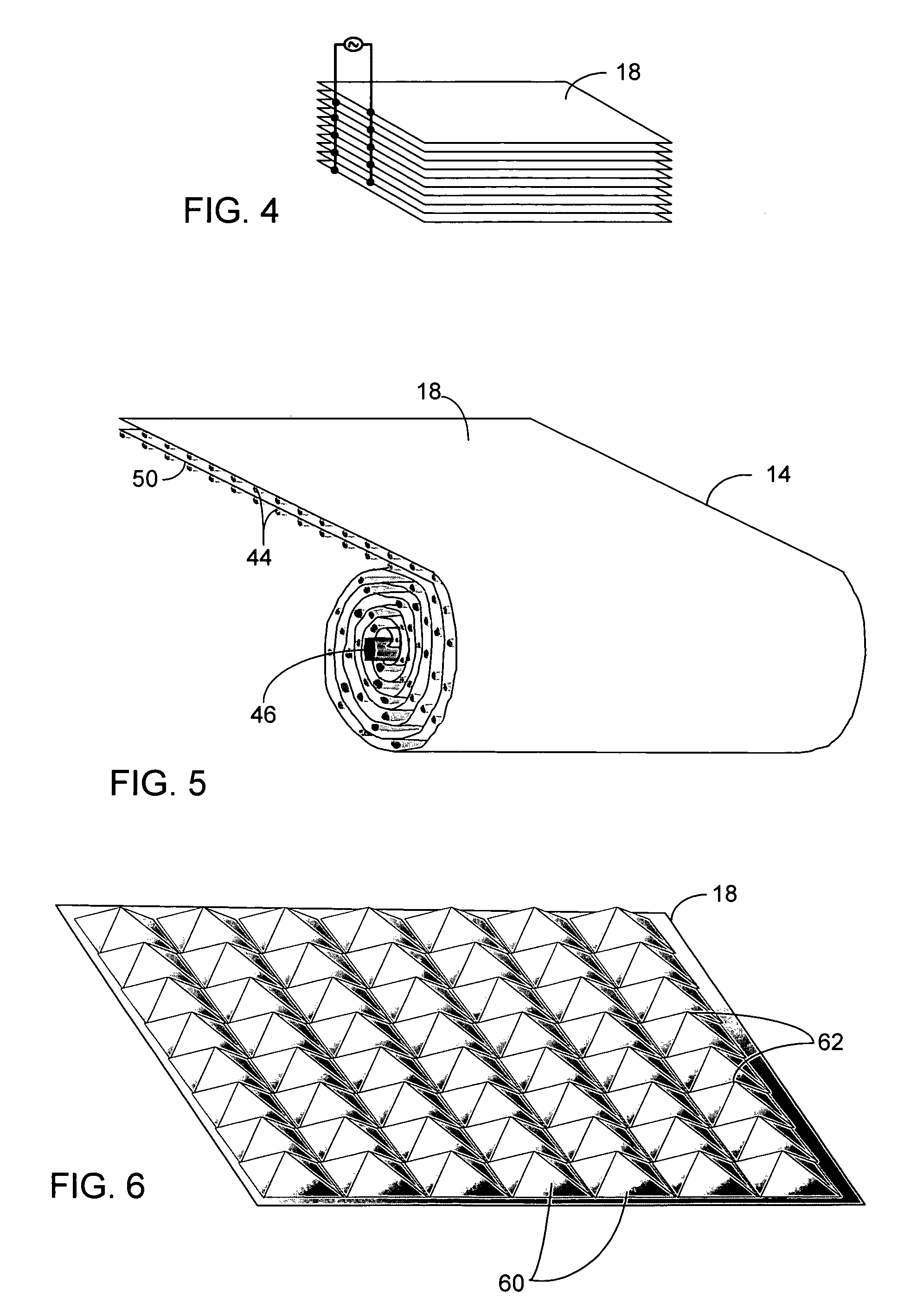In situ generation of hydrogen peroxide
a hydrogen peroxide and in situ technology, applied in the direction of peroxide/peroxyhydrate/peroxyacid/superoxide/ozonide, chemistry apparatus and processes, peroxides/peroxyacids/superoxides/ozonides, etc., can solve the problem of significant solubility of alkylanthraquinone, high installation and operating costs, and loss of working solution
- Summary
- Abstract
- Description
- Claims
- Application Information
AI Technical Summary
Benefits of technology
Problems solved by technology
Method used
Image
Examples
Embodiment Construction
[0022]There are numerous applications where a bleaching agent is helpful, such as, for example the removal of stains from clothing or sink basins and the use of bleach for disinfecting. Conventionally, the use of bleach in an environment such as a personal residence requires the purchase of the bleach. The bleach must be stored in a container, and the user must be aware of the amount on hand available for use. The bleach can also be used for disinfectant purposes, such as a periodic application of bleach to a garbage disposal. The use in a garbage disposal can remove bacteria that are creating unpleasant odors as a result of growth in the garbage disposal. One such bleaching agent is hydrogen peroxide. However, hydrogen peroxide requires storage in a suitable container to prevent breakdown from UV light, such as using a brown plastic container. Hydrogen peroxide also will degrade over time, rendering a solution ineffective if allowed to sit for too long a time.
[0023]The present inve...
PUM
| Property | Measurement | Unit |
|---|---|---|
| length | aaaaa | aaaaa |
| length | aaaaa | aaaaa |
| temperature | aaaaa | aaaaa |
Abstract
Description
Claims
Application Information
 Login to View More
Login to View More - R&D
- Intellectual Property
- Life Sciences
- Materials
- Tech Scout
- Unparalleled Data Quality
- Higher Quality Content
- 60% Fewer Hallucinations
Browse by: Latest US Patents, China's latest patents, Technical Efficacy Thesaurus, Application Domain, Technology Topic, Popular Technical Reports.
© 2025 PatSnap. All rights reserved.Legal|Privacy policy|Modern Slavery Act Transparency Statement|Sitemap|About US| Contact US: help@patsnap.com



